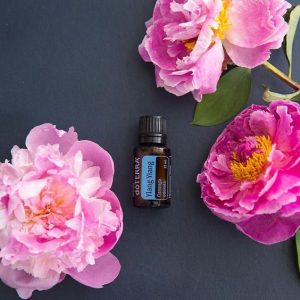doTERRA Tulsi Essential Oil (Holy Basil | Holy Basil)(5ml)
€ 44,67
Tulsi, also known as Holy Basil, is a powerful oil that has been used in many cultures for hundreds of years for various cures and ailments.
In stock
What is Tulsi Essential Oil?
Tulsi is a small, bushy shrub with dark green leaves and pink- and lavender-colored flowers. Tulsi is also popularly called Holy Basil and originates from India. Many Hindus grow Tulsi as a religious plant in their homes and temples and use its leaves in routine worship.
Native to Southeast Asia, Tulsi has a long tradition of use in Ayurvedic health practices and is a well-known sacred plant and a respected herb. In Sanskrit, it is known as “the incomparable” and is considered the “Queen of Spices.”
How to use Tulsi or Holy Basil oil
Tulsi essential oil can be used both topically and aromatically. Simply diffusing or inhaling is always a great way to aromatically soak up the benefits of an oil, and that includes Tulsi. You can enjoy the scent of Tulsi alone or use it to create a diffusion blend that includes other oils.
Apply Holy Basil externally to your spine, soles of your feet, and wrists. You can also add a drop to your facial cleanser or lotion.
Another way you can use Tulsi is in a mouthwash. Put a few drops in some water, gargle and swish, then spit it out. Not only is it good for oral hygiene, but it also keeps your breath fresh.
Finally, you may love to make Tulsi part of a steam facial. You then enjoy the aromatic and topical benefits at the same time. Your skin will thank you and you'll enjoy the soothing effect too!
Just put a few drops of Tulsi in a bowl of hot water. Put a towel over your head and lean your face over the steam. If it gets too hot, you can lift part of the towel, place your face farther from the steam, or take a few seconds break. If you also want to add other oils to the experience, Lavender, Frankincense, and doTERRA Air® are all good options to combine with Tulsi.
What are the benefits of Tulsi oil or Holy Basil?
Traditionally, Tulsi has been used throughout the world as part of rituals, protection, and health practices in many cultures. Tulsi, when inhaled, has a calming, relaxing aroma.
Tulsi contains a high percentage of the chemical compound eugenol, which is also found in clove oil. Eugenol helps keep the mouth looking clean and healthy. It also has cleansing properties, and, applied topically, it is good for healthy skin.
Another constituent found in Holy Basil is 1,8-cineole, also known as eucalyptol, which is found in Eucalyptus. 1,8-cineole helps make Tulsi soothing when atomized or inhaled.
What does Tulsi essential oil smell like?
Compared to its cousin sweet basil, the scent of Holy Basil is richer, warmer and balsamic. The aroma resembles something of a mixture of Cinnamon (Kaneel), Peppermint (Pepermunt), clove (Kruidnagel), and Basil (Basilicum) With a hint of licorice! The aroma is warming, enlightening, and uplifting.
Tulsi blends well with citrus and floral oils, including Bergamot, Clary Sage (Scharlei), Geranium, Lime (Limoen), Lemon (Citroen), and Neroli.
Usage tips:
- Diffuse for a calming atmosphere.
- Add one to two ounces of water and gargle to freshen breath.
- Put a drop in your palm, rub your hands together, and inhale deeply.
Our essential oils are certified pure and contain no fillers, artificial ingredients or contaminants. This guarantees not only their safety and effectiveness, but also their power to work therapeutically. Whether promoting relaxation, relieving ailments, or refreshing your environment, doTERRA offers a natural solution that really works.
Experience for yourself the unparalleled purity and potency of doTERRA essential oils and become part of a community that puts health and wellness first. Discover how our essential oils can help you live a healthier and happier life.















